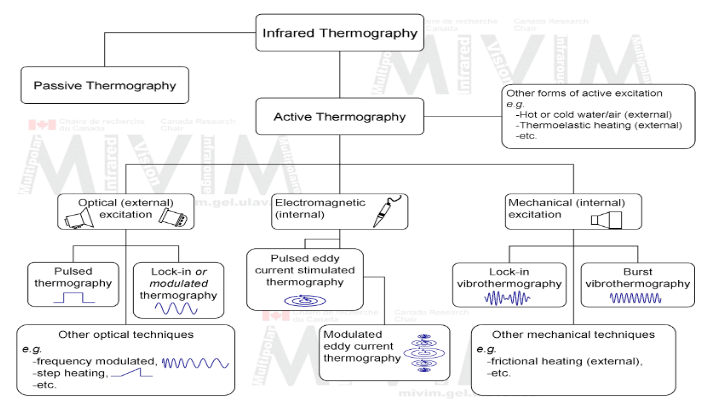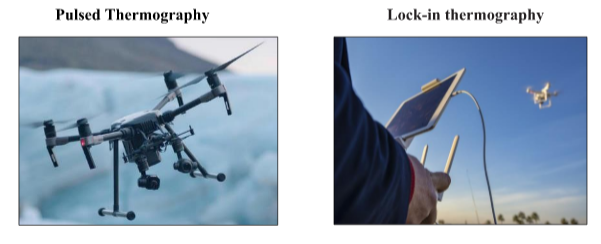NDT Synopsis - Thermography
Thermography has been used for more than 30 years but is still a developing diagnostic modality. The technology has improved recently, and thermography units are now affordable.
The human eye responds to visible light in the range of 0.4 to 0.75 microns, but the majority of infrared temperature measurements range from 0.2 to 20 microns. A thermal imager is able to focus this energy on to a detector much like a regular camera, except it responds to the infrared radiation rather than visible light. Thermo graphic cameras usually detect radiation in the long-infrared range of the electromagnetic spectrum (roughly 9,000–14,000 nanometres or 9–14 μm) and produce images of that radiation, called thermograms.
Infrared energy is emitted, transmitted and reflected by an object; infrared cameras use algorithms to interpret the data to create an accurate interpretation of the operating temperature.This is explained in the formula
Incident Radiant Power = Emitted Radiant Power + Transmitted Radiant Power + Reflected Radiant Power
There are two mutually exclusive approaches in thermography inspection
Passive: – In which the features of interest are naturally at a higher or lower temperature than the background and no energy is introduced to the system being inspected.
Active: – In which Technique external stimulus source (i.e., optical flash lamps, heat lamps, hot or cold air guns, etc.) is required to produce a thermal contrast between the feature of interest and the background.
Infrared thermography techniques: –
There are mainly two classical active thermographic techniques based on optical excitation: lock-in thermography and pulsed thermography
Pulsed Thermography: Pulsed thermography (PT) the specimen surface is submitted to a short heat pulse using a high-power source such as photographic flashes. The duration of the pulse may vary from a few milliseconds (~2-15 ms) to several seconds depending on the thermophysical properties of both, the specimen and the flaw.
Lock-in Thermography: Lock-in thermography (LT) the specimen’s surface is periodically illuminated by one or several modulated heating sources, e.g., halogen lamps, to inject thermal waves into the specimen. The periodic wave propagates by radiation through the air until it reaches the specimen surface where heat is produced and propagates through the material.



